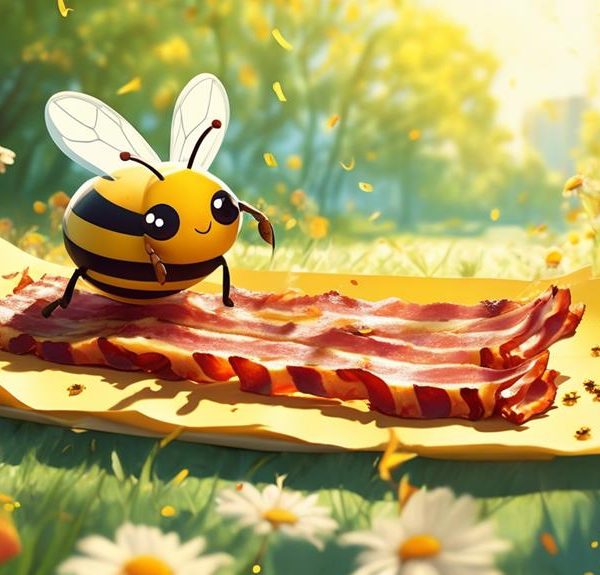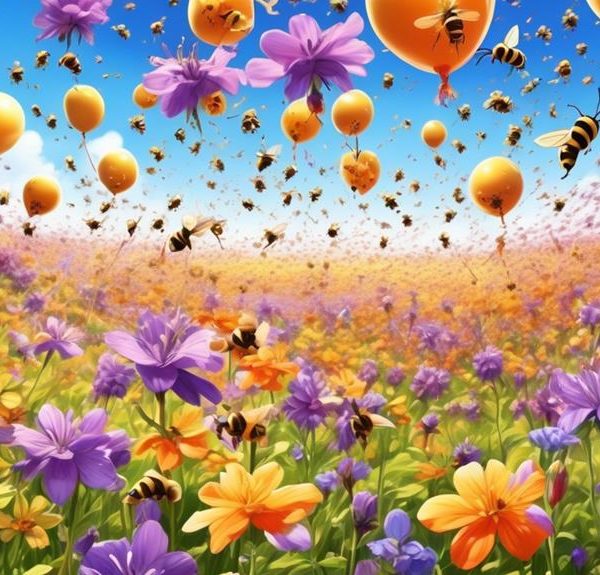The curious link between bees and the Bacopa plant is more complex than you think, discover why in this fascinating exploration.
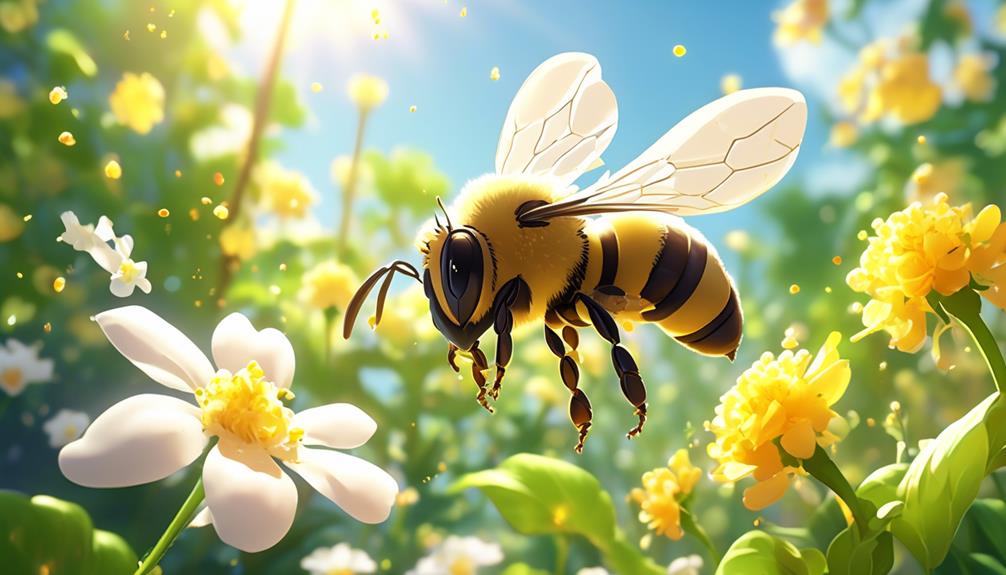
Do Bees Like Bacopa
You've probably noticed how bees buzz around your garden, particularly favoring some plants over others. One such plant you might have is Bacopa, a low-growing perennial known for its cascading branches and small, delicate flowers.
But do bees actually like Bacopa? The intricate relationship between these tiny pollinators and the Bacopa plant is not as straightforward as you might think. There's a lot more to uncover, from the preferences of bees to the role Bacopa plays in their survival.
So why not stick around to find out more?
Key Takeaways
- Bees are attracted to Bacopa due to its color, scent, and nectar-rich flowers.
- Bacopa provides a nutritious food source for bees and is in continuous bloom, offering a steady supply of nectar.
- Bees play a vital role in pollinating Bacopa, ensuring its propagation and contributing to its survival.
- The mutualistic relationship between bees and Bacopa benefits not only their populations but also the ecosystem and biodiversity as a whole.
Understanding Bees and Their Preferences
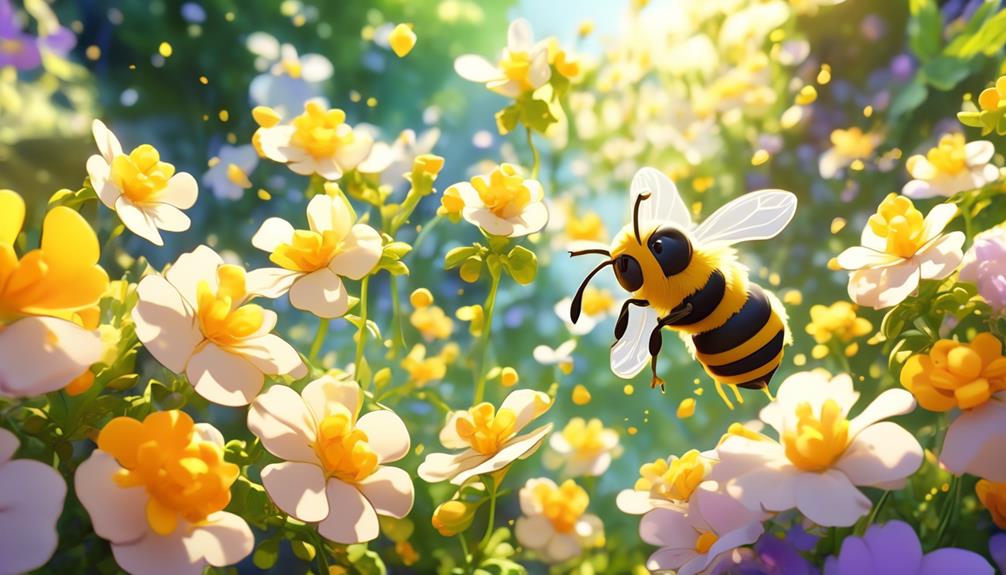
To fully comprehend the preferences of bees, it's crucial to delve into their behavioral patterns, particularly in relation to their selection of flora such as Bacopa. You see, bees aren't random in their choices. They're guided by a complex interplay of factors including, but not limited to, color, scent, and the nutritional value of the nectar.
Consider the Bacopa flower. It's a humble, low-growing plant with tiny white or blue flowers. You might think it's not as attractive as other vibrant, showy flowers. But to bees, it's a different story. The plant's small tubular flowers are perfectly shaped for bees to access the nectar. The scent, while faint to us, is a potent attractant for bees with their superior olfactory senses.
Moreover, Bacopa flowers are rich in nectar, providing bees with a nutritious food source. They're also in continuous bloom, offering a steady supply. So, while it may not seem like a top choice to us, in the eyes (and antennae) of bees, Bacopa is a prime target.
Understanding this helps us appreciate the intricate preferences of bees – a vital step in aiding their conservation.
Bacopa: An Overview
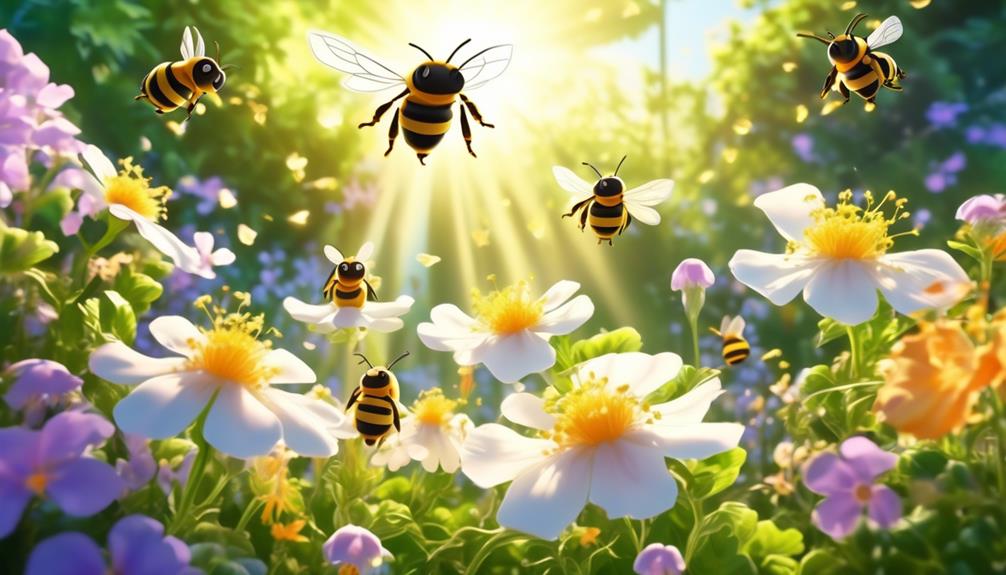
Now that you've got a sense of why bees are attracted to Bacopa, let's get a closer look at this fascinating plant itself. Bacopa, also known as water hyssop, is a genus of 70-100 aquatic plants belonging to the family Plantaginaceae. It's native to nearly all continents, but it's particularly prevalent in tropical and subtropical regions.
To help you better understand Bacopa, let's analyze it in a structured way:
Characteristics | Bacopa Monnieri | Bacopa Caroliniana |
|---|---|---|
Leaves | Oblong, succulent, arranged oppositely along the stem. | Rounded, succulent, and are arranged oppositely along the stem. |
Flowers | Small, actinomorphic and white, with four to five petals. | Blue to purplish, with a lemony scent. |
Uses | Medicinal (improves memory, reduces anxiety), ornamental. | Ornamental, aquarium. |
Bacopa's propensity to grow in different conditions and its captivating beauty make it a favorite among gardeners. Its medicinal properties, particularly in Bacopa Monnieri, have been recognized in traditional medicine for centuries. Now that you're familiar with Bacopa, you'll understand why bees can't resist it!
Bees and Bacopa: The Connection
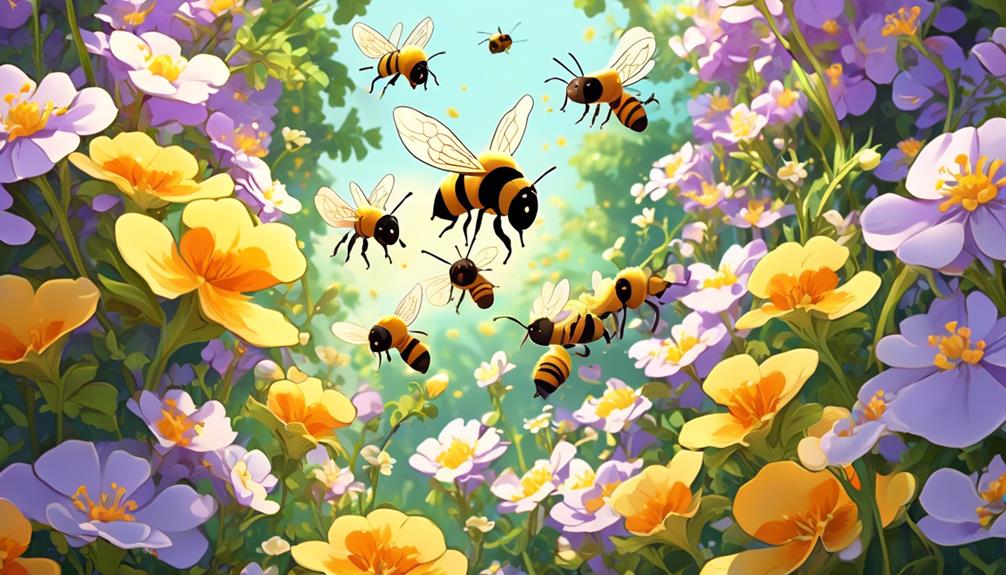
Diving into the heart of this symbiotic relationship, you'll find that bees are irresistibly drawn to Bacopa for its nectar-rich flowers, forming a crucial link in the chain of pollination. Bees, acting as key pollinators, transfer pollen from the male parts of a flower to the female parts, thus facilitating plant reproduction.
The Bacopa plant, with its small, trumpet-shaped flowers, is a veritable magnet for bees. These flowers produce copious amounts of nectar, a sugary liquid that bees need for energy. The bees, in their quest for this energy source, inadvertently collect pollen on their bodies, which then gets transferred to other flowers as they continue their nectar forage.
This interaction isn't only beneficial for the bees and Bacopa, but it's also vital for the ecosystem. Bees are instrumental in maintaining biodiversity by aiding in the pollination of various plants. Meanwhile, Bacopa, through its nectar production, supports the survival of bee populations.
Impact on Ecosystem and Biodiversity
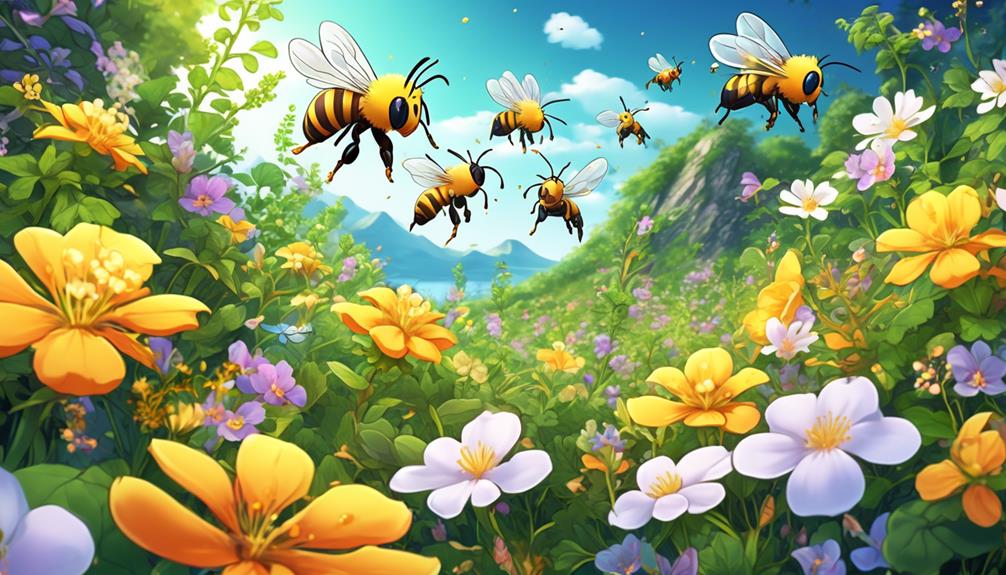
Building on the mutualistic relationship between bees and Bacopa, it's important to understand the broader ecological impact and the role it plays in maintaining biodiversity.
Bacopa, a water-loving perennial, provides a vital nectar source for bees, contributing to their survival. In turn, bees provide pollination, ensuring the propagation of Bacopa.
The symbiosis bolsters ecosystem stability. As Bacopa thrives, it benefits aquatic life by providing shelter and food, enhancing aquatic biodiversity. It's capable of creating microhabitats that support a variety of organisms, from insects to amphibians.
Furthermore, bees' pollen transportation aids genetic diversity among Bacopa populations, promoting resilience in the face of environmental changes. This bee-Bacopa interaction also indirectly affects biodiversity on a larger scale. The bees, fueled by Bacopa's nectar, pollinate other plants, contributing to the diversity and robustness of plant communities.
However, it's crucial to note that environmental disturbances could disrupt this mutualism. Habitat destruction, pollution, and climate change pose threats. For instance, water pollution might diminish Bacopa populations, affecting bees' food sources. Consequently, the intricate web of biodiversity could unravel. Therefore, maintaining this delicate balance is pivotal for ecological health.
Tips for Attracting Bees With Bacopa
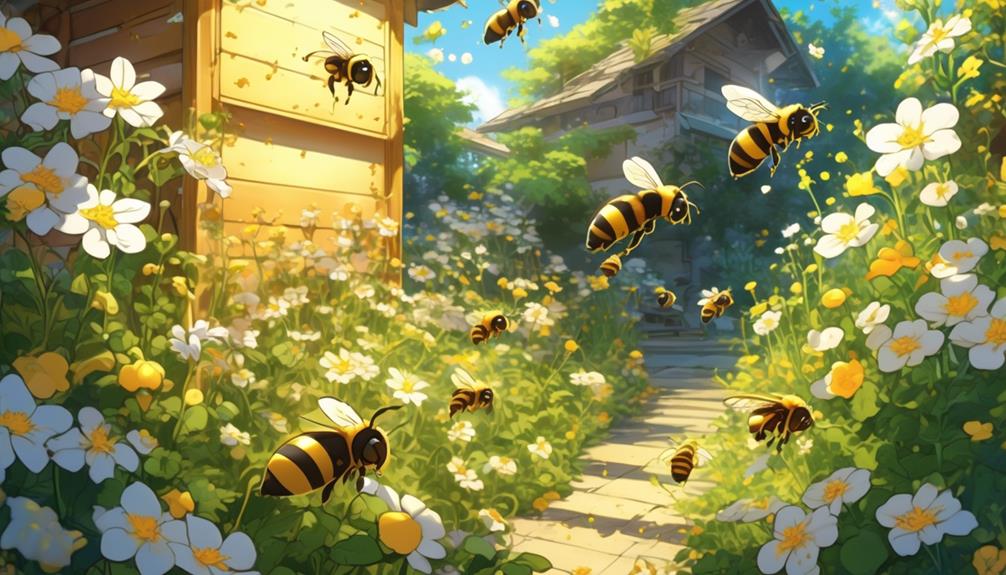
To attract bees with Bacopa, understanding the specifics of their preferences and the plant's growing conditions is essential. Bees are drawn to Bacopa due to its plentiful nectar and pollen. The plant's bright white flowers, which bloom from spring until the first frost, act as a visual beacon for these industrious pollinators.
Here's a table to help you better understand the relationship between bees and Bacopa:
Bee Preferences | Bacopa Attributes |
|---|---|
Bright, colorful flowers | Blooms from spring until first frost |
Abundant pollen and nectar | Provides plentiful nectar and pollen |
Diverse plant species | Can be combined with other bee-attracting plants |
For effective attraction, ensure Bacopa plants are situated in full sun to partial shade, with moist, well-drained soil. Bacopa thrives in cooler conditions, so consider this when positioning your garden.
Further, incorporating Bacopa with other bee-friendly plants can enhance attraction, diversifying the pollinator appeal of your garden. Lavender, clover, and cosmos are excellent companions for Bacopa. Remember, bees love variety! Utilize these tips, and you'll be able to attract an array of bees with Bacopa.
Frequently Asked Questions
What Other Flowers, Besides Bacopa, Are Attractive to Bees?
You're curious about what flowers, aside from bacopa, attract bees. Bees are drawn to a variety of blossoms. They're particularly fond of flowers like lavender, sage, and sunflowers. These blooms offer plenty of nectar and pollen, making them a bee's paradise.
Other favorites include cosmos, zinnias, and black-eyed Susans. Planting these in your garden won't just add color, but also promote a healthy bee population.
How Can I Protect My Bacopa Plants From Pests Without Harming Bees?
To protect your bacopa plants from pests without harming bees, you'll need to choose organic, bee-friendly pesticides. Try using neem oil or insecticidal soaps. These are effective against many common garden pests and are safe for bees.
It's also advisable to apply these treatments in the early morning or late evening when bees are less active. This way, you're reducing the risk of direct contact.
Is There a Specific Type of Bacopa That Bees Prefer?
You're asking if there's a specific type of Bacopa that bees prefer.
While bees are attracted to Bacopa due to its vibrant colors and sweet nectar, there isn't any scientific evidence that suggests they favor one type over another.
They're usually drawn to plants with bright colors and copious nectar, regardless of the species.
Can Bacopa Plants Survive in a Bee Hive Environment?
You're asking if bacopa plants can survive in a bee hive environment. It's not likely.
Bacopa plants need full to partial sunlight, well-draining soil, and ample space to grow. A beehive environment doesn't provide these conditions.
It's dark, cramped, and doesn't have the soil needed for bacopa.
What Are the Potential Risks to Bees When They Feed on Bacopa?
You're asking about the risks bees might face when feeding on Bacopa. It's important to note that Bacopa isn't known to be harmful to bees. In fact, bees are often attracted to its small, blue flowers.
However, if the Bacopa plant has been treated with pesticides or other chemicals, it could pose a risk to the bees. Even natural substances can be toxic if used improperly. So, it's more about the treatment of the plant than the plant itself.
Conclusion
So, you've learned that bees indeed fancy bacopa. This symbiotic relationship not only benefits the bees, but also contributes to our ecosystem's health.
By planting more bacopa, you're aiding in bee population growth and promoting biodiversity.
Now, it's your turn to make a difference. Plant some bacopa, watch bees buzz in joy, and feel good about the positive impact you're making.
After all, every small effort counts in the grand scheme of things.

